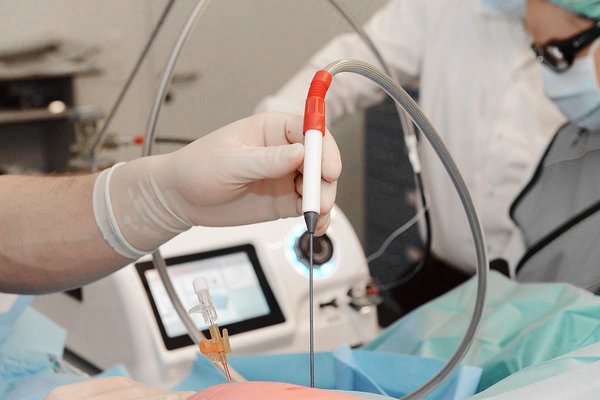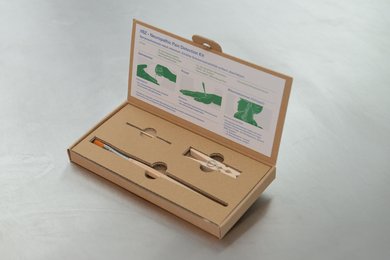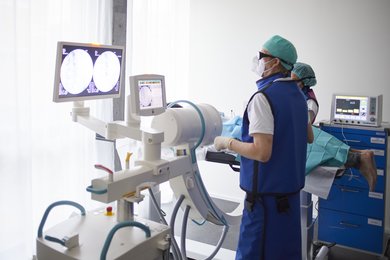Treatments
Treating nerve pain with cold

Cryoneurolysis: treating nerve pain with cold
The local application of cold temperatures has been used to treat pain for many decades. Modern cryoneurolysis, also known as cryoanalgesia, is a medical intervention that enables targeted treatment of a pain condition in the area of a locally damaged peripheral nerve. Under the guidance of ultrasound and/or X-ray, a cryoneurolysis tube ( = cannula / needle) is guided to a damaged nerve. As soon as the probe has been placed correctly, the treatment takes place. During this process, the cryoneurolysis tube is cooled to -78°C. This cooling causes the nerve to cool down over time. The cooling induces a temporary loss of function in the treated nerve, but without altering its actual external structure. As a result, the desired pain reduction is ideally achieved, but in return, a lasting numbness is caused in the innervation area of the nerve.
When does cryoneurolysis help?
For a successful treatment with cryoneurolysis, a careful indication is the most important prerequisite. This is the only way to find out whether cryoneurolysis is suitable for treating a specific pain condition. In addition to the medical history and a specific physical examination, a structured assessment is carried out with a high-resolution ultrasound device. Nerve ultrasound makes it possible to obtain information about the location, type and also the severity of a nerve damage. Test infiltrations with local anaesthetics are also particularly important. These allow to form a statement about whether the planned cryoneurolysis treatment will improve pain control or possibly not.
At the IISZ, cryoneurolysis treatments are performed on an outpatient basis. One treatment lasts between 30 and 60 minutes, including preparation and follow-up.
Potential indications
Possible indications for therapy of damaged nerves by means of cryoneurolysis are manifold:
- Electrifying stabbing facial pain (N. auricularis, N. trigeminus)
- Radiating neck pain (N. occipitalis)
- Chronic chest wall pain, e.g. after heart/lung surgery, chest surgery or shingles (Nn. intercostales)
- Pain in the groin region after surgery (N. ilioinguinalis, N. genitofemoralis)
- Chronic knee pain, e.g. after surgery (N. saphenus, Nn. geniculares)
- ...
After a treatment
The extent of the pain reduction achieved by cryoneurolysis, as well as the duration of the effect, is variable. The individual conditions of a patient play a role, but also the nerve to be treated.
Cryoneurolysis can improve pain control over several weeks up to 12 months. Due to the improved pain situation, the patients experience a gain in quality of life and are able to carry out rehabilitation measures as well as their usual everyday activities more easily. It should be noted that cryoneurolysis is usually not a permanent treatment. However, if the effect wears off, cryoneurolysis can be repeated without any problems, usually with comparable results.
Adverse effects and complications
Cryoneurolysis is a comparatively simple treatment procedure that rarely results in complications. If the treatment site is directly under the skin, frost damage to the skin is possible. Otherwise, the same complications are possible as with other injections and infiltrations, but they are all very rare.

















